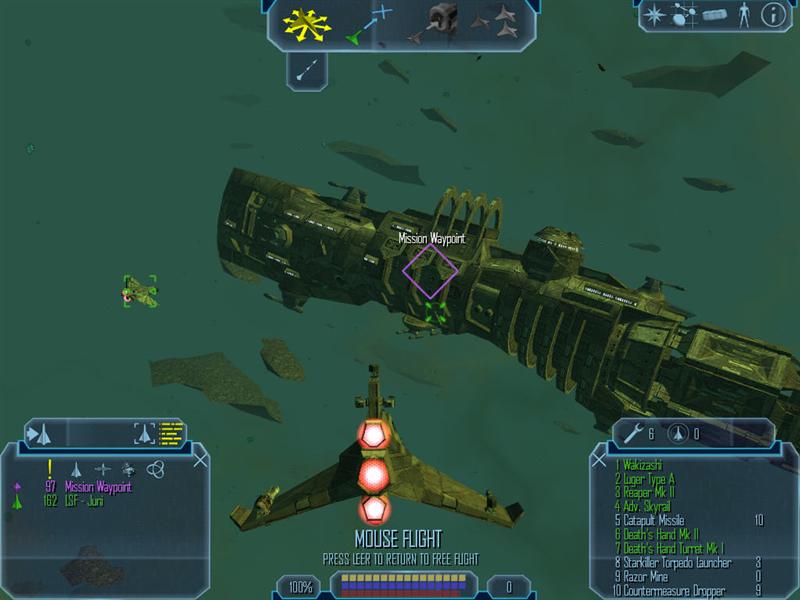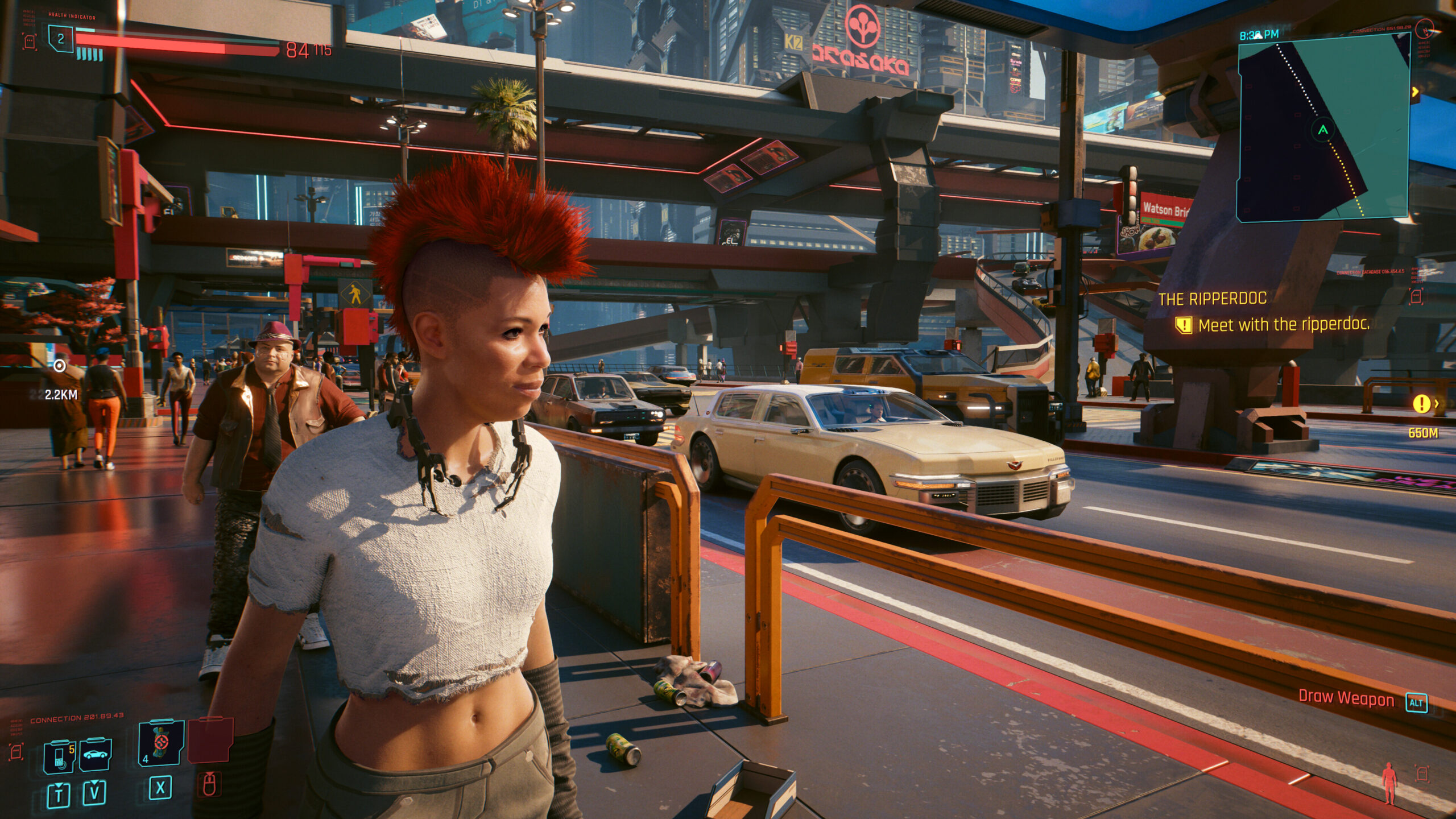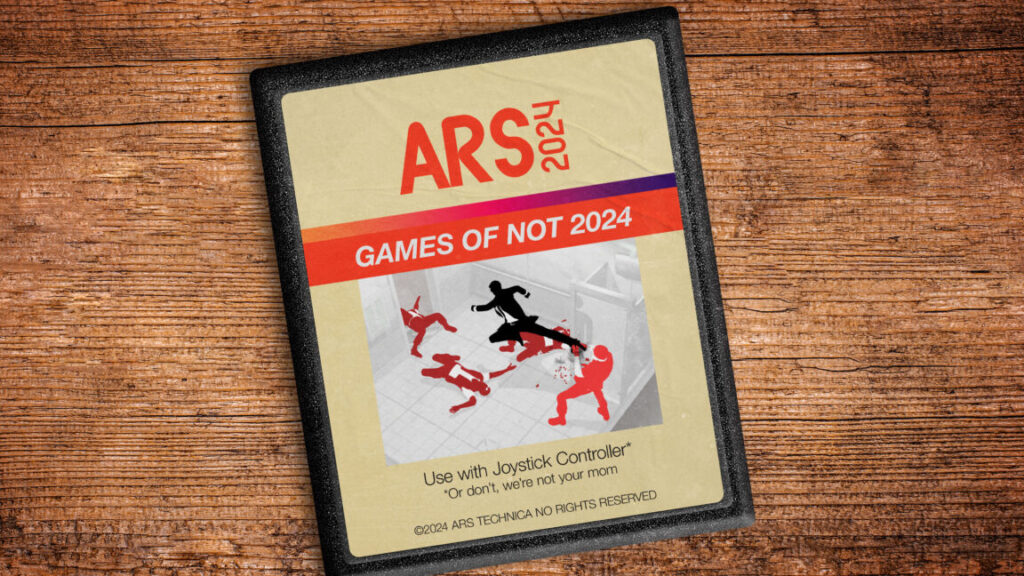Ars’ favorite games of 2024 that were not released in 2024
Look what we found laying around
The games that found us in 2024, from 2003 space sims to 2022 backyard survival.
More than 18,500 games will have been released onto the PC gaming platform Steam in the year 2024, according to SteamDB. Dividing that by the number of people covering games at Ars, or the gaming press at large, or even everybody who games and writes about it online, yields a brutal ratio.
Games often float down the river of time to us, filtered by friends, algorithms, or pure happenstance. They don’t qualify for our best games of the year list, but they might be worth mentioning on their own. Many times, they’re better games then they were at release, either by patching or just perspective. And they are almost always lower priced.
Inspired by the cruel logic of calendars and year-end lists, I asked my coworkers to tell me about their favorite games of 2024 that were not from 2024. What resulted were some quirky gems, some reconsiderations, and some titles that just happened to catch us at the right time.
Stardew Valley

Credit: ConcernedApe
ConcernedApe; Basically every platform
After avoiding it forever and even bouncing off of it once or twice, I finally managed to fall face-first into Stardew Valley (2016) in 2024. And I’ve fallen hard—I only picked it up in October, but Steam says I’ve spent about 110 hours playing farmer.
In addition to being a fun distraction and a great way to kill both short and long stretches of time, what struck me is how remarkably soothing the game has been. I’m a nervous flyer, and it’s only gotten worse since the pandemic, but I’ve started playing Stardew on flights, and having my little farm to focus on has proven to be a powerful weapon against airborne anxiety—even when turbulence starts up. Ars sent me on three trips in the last quarter of the year, and Stardew got me through all the flights.
Hell, I’m even enjoying the multiplayer—and I don’t generally do multiplayer. My cousin Shaun and I have been meeting up most weekends to till the fields together, and the primary activity tends to be seeing who can apply the most over-the-top creatively scatological names to the farm animals. I’ve even managed to lure Ur-Quan Masters designer Paul Reiche III to Pelican Town for a few weekends of hoedowns and harvests. (Perhaps unsurprisingly, Paul was already a huge fan of the game. And also of over-the-top creatively scatological farm animal names. Between him and Shaun, I’m amassing quite a list!)
So here’s to you, Stardew Valley. You were one of the brightest parts of my 2024, and a game that I already know I’ll return to for years.
— Lee Hutchinson
Grounded

Credit: Xbox Game Studios
Obsidian; Windows, Switch, Xbox, PlayStation
My favorite discovery this year has probably been Grounded, a Microsoft-published, Obsidian Entertainment-developed survival crafting game that was initially released back in 2022 (2020 if you count early access) but received its final planned content update back in April.
You play as one of four plucky tweens, zapped down to a fraction-of-an-inch high as part of a nefarious science experiment. The game is heavily inspired by 1989’s classic Honey, I Shrunk the Kids, both in its ’80s setting and its graphical design. Explore the backyard, fight bugs, find new crafting materials, build out a base of operations, and power yourself up with special items and steadily better equipment so you can figure out what happened to you and get back to your regular size.
Grounded came up because I was looking for another game for the four-player group I’ve also played Deep Rock Galactic and Raft with. Like Raft, Grounded has a main story with achievable objectives and an endpoint, plus a varied enough mix of activities that everyone will be able to find something they like doing. Some netcode hiccups notwithstanding, if you like survival crafting-style games but don’t like Minecraft-esque, objective-less, make-your-own-fun gameplay, Grounded might scratch an itch for you.
— Andrew Cunningham
Fights in Tight Spaces

Credit: Raw Fury
Ground Shatter; Windows, Switch, Xbox, PlayStation
I spent a whole lot of time browsing, playing, and thinking about roguelike deckbuilders in 2024. Steam’s recommendation algorithm noticed, and tossed 2021’s Fights in Tight Spaces at me. I was on a languid week’s vacation, with a Steam Deck packed, with just enough distance from the genre by then to maybe dip a toe back in. More than 15 hours later, Steam’s “Is this relevant to you?” question is easy to answer.
Back in college, I spent many weekends rounding out my Asian action film knowledge, absorbing every instance of John Woo, Jackie Chan, Jet Li, Flying Guillotine, Drunken Master, and whatever I could scavenge from friends and rental stores. I thrilled to frenetic fights staged in cramped, cluttered, or quirky spaces. When the hero ducks so that one baddie punches the other one, then backflips over a banister to two-leg kick the guy coming up from beneath? That’s the stuff.
Fights gives you card-based, turn-by-turn versions of those fights. You can see everything your opponents are going to do, in what order, and how much it would hurt if they hit you. Your job is to pick cards that move, hit, block, counter, slip, push, pull, and otherwise mess with these single-minded dummies, such that you dodge the pain and they either miss or take each other out. Woe be unto the guy with a pistol who thinks he’s got one up on you, because he’s standing right by a window, and you’ve got enough momentum to kick a guy right into him.
This very low-spec game has a single-color visual style, beautifully smooth animations, and lots of difficulty tweaking to prevent frustration. The developer plans to release a game “in the same universe,” Knights in Tight Spaces, in 2025, and that’s an auto-buy for me now.
— Kevin Purdy
The Elder Scrolls III: Morrowind

Credit: Bethesda Game Studios
Bethesda; Windows, Xbox
The Elder Scrolls III: Morrowind always had a sort of mythic quality for me. It came out when I was 18 years old—the perfect age for it, really. And more than any other game I had ever played, it inspired hope and imagination for where the medium might go.
In the ensuing years, Morrowind (2002) ended up seeming like the end of the line instead of the spark that would start something new. With some occasional exceptions, modern games have emphasized predictable formulae and proven structures over the kind of experimentation, depth, and weirdness that Morrowind embraced. Even Bethesda’s own games gradually became stodgier.
So Morrowind lived in my memory for years, a sort of holy relic of what gaming could have been before AAA game design became quite so oppressively formalist.
After playing hundreds of hours of Starfield this year, I returned to Morrowind for the first time in 20 years.
To be clear: I quite liked Starfield, counter to the popular narrative about it—though I definitely understood why it wasn’t for everyone. But people criticized Starfield for lacking the magic of a game like Morrowind, and I was skeptical of that criticism. As such, my return to the island of Vvardenfell was a test: did Morrowind really have a magic that Starfield lacks, even when taken out of the context of its time and my youthful imagination and open-mindnedness?
I was surprised to find that the result was a strong affirmative. I still like Starfield, but its cardinal sin is that it is unimaginative because it is derivative—of No Man’s Sky, of Privateer and Elite, of Mass Effect, of various 70s and 80s sci-fi films and TV series, and most of all, of Bethesda Game Studios’ earlier work.
In contrast, Morrowind is a fever dream of bold experimentation that seems to come more from the creativity of ambitious designers who were too young to know any better, than from the proven designs of past hits.
I played well over a hundred hours of Morrowind this year, and while I did find it tedious at times, it’s engrossing for anyone who’s willing to put up with its archaic pacing and quirks.
To be clear, many of the design experiments in the game simply don’t work, with systems that are easily exploited. Its designers’ naivety shines through clearly, and its rough edges serve as clear reminders of why today’s strict formalism has taken root, especially in AAA games where too-big budgets and payrolls leave no room at all for risk.
Regardless, it’s been wild to go back and play this game from 2002 and realize that in the 22 years since there have been very few other RPGs that were nearly as brazenly creative. I love it for that, just as much as I did when I was 18.
— Samuel Axon
Tetrisweeper

Credit: Kertis Jones Interactive
Kertis Jones; Itch.io, coming to Steam
If you ask someone to list the most addictive puzzle games of all time, Tetris and Minesweeper will probably be at or near the top of the list. So it shouldn’t be too surprising that Tetrisweeper makes an even more addictive experience by combining the two grid-based games together in a frenetic, brain-melting mess.
Tetrisweeper starts just like Tetris, asking you to arrange four-block pieces dropping down a well to make lines without gaps. But in Tetrisweeper, those completed lines won’t clear until you play a game of Minesweeper on top of those dropped pieces, using adjacency information and logical rules to mark which ones are safe and which ones house game-ending mines (if you want to learn more about Minesweeper, there’s a book I can recommend).
At first, playing Tetris with your keyboard fingers while managing Minesweeper with your mouse hand can feel a little unwieldy—a bit like trying to drive a car and cook an omelet at the same time. After a few games, though, you’ll learn how to split your attention effectively to drop pieces and solve complex mine patterns nearly simultaneously. That’s when you start to master the game’s intricate combo multiplier system and bonus scoring, striving for point-maximizing Tetrisweeps and T-spins (my high score is just north of 3 million, but pales in comparison to that of the best players).
While Tetrisweeper grew out of a 2020 Game Jam, I didn’t discover the game until this year, when it helped me clear my head during many a work break (and passed the time during a few dull Zoom calls as well). I’m hoping the game’s planned Steam release—still officially listed as “Coming Soon”—will help attract even more addicts than its current itch.io availability.
— Kyle Orland
Freelancer

Digital Anvil; Windows
What if I told you that Star Citizen creator Chris Roberts previously tried to make Star Citizen more than two decades ago but left the project and saw it taken over by real, non-crazy professionals who had the discipline to actually finish something?
That’s basically the story behind 2003’s forgotten PC game Freelancer. What started as a ludicrously ambitious space life sim concept ended up as a sincere attempt to make games like Elite and Wing Commander: Privateer far more accessible.
That meant a controversial, mouse-based control scheme instead of flight sticks, as well as cutting-edge graphics, celebrity voice actors, carefully designed economy and progression systems, and flashy cutscenes.
I followed the drama of Freelancer‘s development in forums, magazines, and gaming news websites when I was younger. I bought the hype as aggressively as Star Citizen fans did years later. The game that came out wasn’t what I was dreaming of, and that disappointment prevented me from finishing it.
Fast-forward to 2024: on a whim, I played Freelancer from beginning to end for the first time.
And honestly? It’s great. In a space trading sim genre that’s filled with giant piles of jank (the X series) or inaccessible titles that fly a little too far into the simulation zone for some (Elite Dangerous), Freelancer might be the most fun you can have with the genre even today.
It’s understandable that it didn’t have much lasting cultural impact since the developers who took it over lacked the wild ambition of the man who started it, but I enjoyed a perfectly pleasant 20–30 hours smuggling space goods and shooting pirates—and I didn’t have to spend $48,000 of real money on a ship to get that.
— Samuel Axon
Cyberpunk 2077

Credit: CD Projekt Red
CD Projekt Red; Windows, Xbox, PlayStation (macOS in 2025)
Can one simply play, as a game, one of the biggest and most argued-over gaming narratives of all time? Four years after its calamitous launch sparked debates about AAA gaming sprawl, developer crunch, game review practicalities, and, eventually, post-release redemption arcs, what do you get when you launch Cyberpunk 2077?
I got a first-person shooter, one with some interesting ideas, human-shaped characters you’d expect from the makers of The Witcher 3, and some confused and unrefined systems and ideas. I enjoyed my time with it, appreciate the work put into it, and can recommend it to anyone who is okay with something that’s not quite an in-depth FPS RPG (or “immersive sim”) but likes a bit of narrative thrust to their shooting and hacking.
You can’t fit everything about Cyberpunk 2077 into one year-end blurb (or a 1.0 release, apparently), so I’ll stick to the highs and lows. I greatly enjoyed the voice performances, especially from Keanu Reeves and Idris Elba (the latter in the Phantom Liberty DLC), and those behind Jackie, Viktor Vektor, and the female version of protagonist V. I was surprised at how good the shooting felt, given the developer’s first time out; the discovery of how a “Smart” shotgun worked will stick with me a while. The driving: less so. There were moments of quiet, ambient world appreciation, now that the game’s engine is running okay. And the side quests have that Witcher-ish quality to them, where they’re never as straightforward as described and also tell little stories about life in this place.
What seems missing to me, most crucially, are the bigger pieces, the real choices and unexpected consequences, and the sense of really living in this world. You can choose one of three backgrounds, but it only comes up as an occasional dialogue option. You can build your character in myriad ways, and there are lots of dialogue options. But the main quest keeps you on a fairly strict path, with the options to talk, hack, or stealth your way past inevitable shootouts not as great as you might think. Once you’ve brought your character up to power-fantasy levels, the larger city becomes a playground, but not one I much enjoyed playing in. (Plus, the idea of idle wandering and amassing wealth, given the main plot contrivance, is kind of ridiculous, but this is a game, after all).
Phantom Liberty, in my experience, patches up every one of these weaknesses inside its smaller play space, providing more real choices and a tighter story, with more set pieces arriving at a faster pace. If you can buy this game bundled with its DLC, by all means, do so. I didn’t encounter any game-breaking bugs in my mid-2024 playthrough, nor even many crashes. Your mileage may vary, especially on consoles, as other late-coming players have seen.
Waiting on this game a good bit certainly helps me grade it on a curve; nobody today is losing $60 on something that looks like it’s playing over a VNC connection. When CD Projekt Red carries on in this universe, I think they’ll have learned a lot from what they delivered here, much like we’ve all learned about pre-release expectations. It’s okay to take your time getting to a gargantuan game; there are lots of games from prior years to look into.
— Kevin Purdy
Ars’ favorite games of 2024 that were not released in 2024 Read More »

